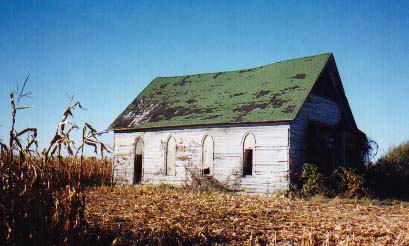 rwise. Also to be blamed no doubt is the increased mobility of our society. In the 1950's a round trip to church of 50 miles would have been unthinkable. Today, however, many make the drive the nearest urban or suburban center to the sprawling grounds of the hottest church at the moment; leaving the country parson to beg for parishioners. To be sure, there are no shortage of reasons that our once vibrant rural churches have morphed into monuments of eras bygone.
rwise. Also to be blamed no doubt is the increased mobility of our society. In the 1950's a round trip to church of 50 miles would have been unthinkable. Today, however, many make the drive the nearest urban or suburban center to the sprawling grounds of the hottest church at the moment; leaving the country parson to beg for parishioners. To be sure, there are no shortage of reasons that our once vibrant rural churches have morphed into monuments of eras bygone.Despite all of this there is definite reason to preserve the many small rural churches we currently maintain. Perhaps the greatest of these reasons is the simple fact that many of these churches, though they may be small, still exercise a sizable amount of influence and voice in their communities. These churches, whatever their effectiveness in measurable terms for the kingdom, remain places of meeting, community centers, and voices for the kingdom in communities that might otherwise lack such a voice. Of course, not all of the small rural churches currently operating take advantage of these benefits. Yet in every small rural church there is the potential to stand as a serious contender in the affairs of the community. A small church in a small town can have the unique ability to call the entire town to revival, reconciliation, and justice. In a small town the entire area is the parish of the church. People who have always lived near the church consider it their spiritual home even though they never attend.
To be sure, there is no shortage of need in small rural communities for the gospel of Jesus Christ. The Glenmary Research Center in Atlanta, Georgia has found that as many as 40% of the rural population in the United States is unchurched. These numbers are born out even more significantly in Indiana and the general Midwest. A 1991 nationally operated survey of religious adherents county by county revealed that in many counties in rural Indiana the situation is far worse. Fulton County, Indiana, for example, claimed only 42% of its population to regularly attend a religious institution. The numbers were not much improved in many of the counties that comprise of the Wabash Valley, once a cradle for the Methodist and Wesleyan traditions in the Midwestern United States. Definitely, there is a need! There is a need for salvation in many of these rural communities. There is the need for a voice of the church in many of these communities. Quite simply, the battle is not yet won, nor is it looking like it will be won any time soon.
Why write about a topic that so few of my peers likely care about? Why set to word thoughts on a topic that District Superintendents are only forced to think of? Why raise a voice for the small town or rural church? Because we cannot forget them. Indeed they are small churches; not glamorous. Often they lack a projector screen or power point presentations for worship. They seldom sing the most recent songs blasted over Christian radio. Yet, "Whoever can be trusted with very little can also be trusted with much..."
